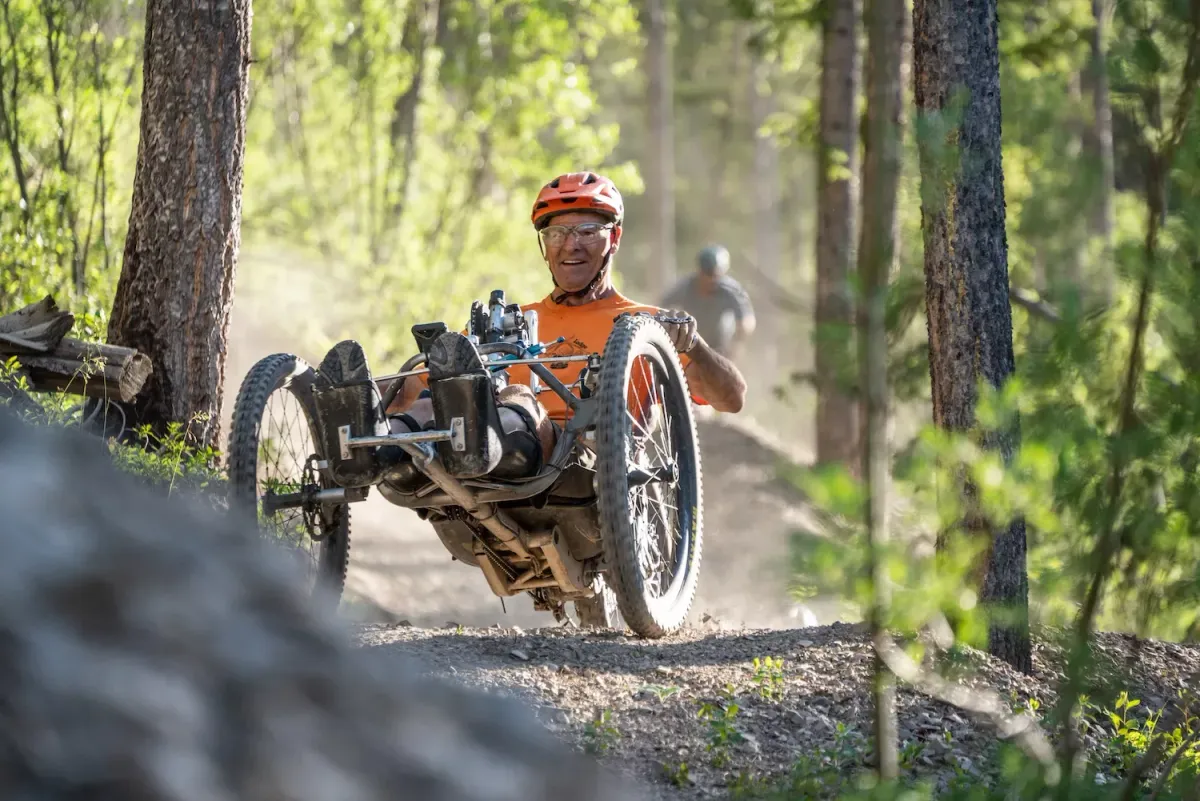Community Built

From the ashes of Sun Valley’s 2007 Castle Rock fire, a community asset was born. Recognizing an opportunity within the scope of fire rehabilitation, visionary leaders from the regional Forest Service office and the Wood River Bicycle Coalition (now Wood River Trails Coalition) collaborated to propose one of the first purpose-built trails in the region. Grants were procured, approvals granted, and equipment mobilized- all at speeds normally unseen on public lands. By the fall of 2011, a small team lead by freeride legend Randy Spangler were onsite sculpting what would become a beloved resource complementing the region’s vast heritage singletrack network.
Fast forward 10 years and two wheel sizes and the beloved test-piece needed a major overhaul. At a 12% grade with rollable features, the trail was approachable by novice riders but still on the fast side of the spectrum. Some deep dish 20% drops into catch-berms highlighted the trail experience for many, but 10 years of riders on the brakes had created washboard typical of a lift access bike park. Identifying the need for a machine rebuild was the first step to restoring the trail’s glory, but what came next created something much more meaningful.
The addition of the hanging loop high in the Adam’s Gulch Trail network had created an amplified bi-directional conflict on the Eve’s Gulch trail accessing it. Forbidden Fruit was the first purpose-built, directional trail in the area and adrenalized riders would egress off Forbidden Fruit in conflict with riders ascending Eve’s, most en route to enjoy the same experience. As trail traffic increased, a few close calls on the uphill had members of the community thinking- how can we address this issue?
The solution came as a simple proposal to extend the Forbidden Fruit trail, prolonging the existing directional downhill experience and eliminating the conflict created on the Eve’s Gulch uphill access. Forbidden Fruit had become popular with adaptive athletes using hand-cycles in recent years, but the trail was definitely demanding for all but the most expert hand-cyclists. With a greater vision of accessibility, the Wood River Trail Coalition’s Sara Gress and Ketchum Ranger District’s Justin Blackstead invited the local adaptive sports group, Higher Ground into the conversation.
With feedback from Higher Ground’s athletes, the project team collaborated with the hand-cyclists and builders Titus Trails to create a more accessible experience on both the existing and new sections of Forbidden Fruit. With Higher Ground and accessibility now in the scope, the team brought the National Forest Foundation onboard to help bring the comprehensive project to fruition. Increased trailhead parking and the widening of existing bridges over water crossings were incorporated into the narrative, bringing a holistic approach to what became the Adam’s Gulch Adaptive Sports Trail Enhancement Project.
Approval for the project came nearly as quickly as the initial build. Blades hit the dirt in the fall of 2021 and the trails opened to the public this past June. With the first wave implemented adding the new, lower section of trail, the entry barrier was lowered, allowing riders of all abilities to access a machine-built trail experience just a short ride from the trailhead or town. A 50-person volunteer day this spring helped bring the new section of trail to the finish line, cementing the riding community’s relationship with the trail. The universal design of Forbidden Fruit invites all riders from families to hand-cyclists, veteran riders to local shredders to share in its fun. Born of, maintained, and reimagined by the local riding scene, Forbidden Fruit truly represents a community-built trail.





